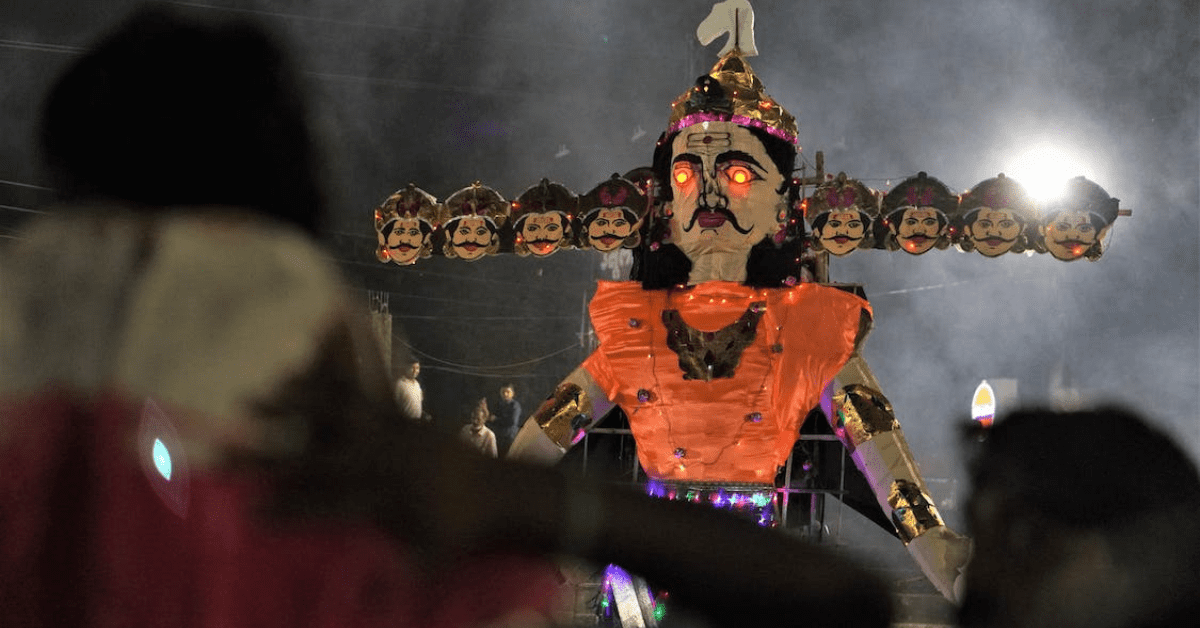Dussehra, which is also called Vijayadashami, is an important Hindu festival that is celebrated with great zeal and joy in India. This festival signifies the victory of Lord Rama over the demon king Ravana. The Hindu epic Ramayana talks about how Ravana abducted Goddess Sita, Lord Rama’s wife. After a tough battle that lasted ten days, Lord Rama killed Ravana with the blessings of Goddess Durga. This marked the victory of Lord Rama over evil. This is why Dussehra signifies the victory of truth, goodness, and justice over evil and deceit.
The tenth day of the nine-day Navratri festival is when Dussehra is observed. The festival is about worshiping the goddess Durga. Every day, we worship different forms of Durga, invoking nine different forms of Goddess Durga. Nine different forms of Goddess Durga are Shailaputri, Brahmacharini, Chandraghanta, Kushmanda, Skandamata, Katyayani, Kalaratri, Maha Gauri, and Siddhidatri. The last day of the celebrations is Dussehra, which marks the end of the nine days of worship.
Different regions in India celebrate Dussehra in distinct ways; thus, it is a culturally rich and diverse festival.
In West Bengal, Dussehra is known as Durga Puja and is one of the biggest and most important festivals in the region. Beautiful Goddess Durga idols are made and worshipped. The artistic decorations and cultural shows make the festival even more beautiful.
Dussehra is called “Mysuru Dasara” in the southern state of Karnataka. This festival is famous for grand celebrations and the Mysore Palace lighting. There is a Mysore Dasara procession, which has singers, folk dancers, and beautifully decorated elephants. It is one of the most rich celebrations of Dussehra in India.
In Telangana, during Navratri, women in the state of Telangana enjoy the Bathukamma Festival by making flower stacks called “Bathukamma” and dancing around them. This is a joyful event in honor of the goddess Durga.
These are just a few examples of how Dussehra is celebrated in different regions. Besides its religious significance, Dussehra is an important occasion in Indian culture.
The festival of Dussehra is celebrated differently in different regions, but traditions are common all over India. One of these traditions is Ramlila skits. It is a drama based on the Ramayana, the Hindu epic. These performances draw individuals of all ages around the country.
Effigies of Ravana, Meghanada, and Kumbhakarna are burned on Dussehra evening. This event represents the triumph of good over evil and the destruction of evil. A large number of people gather to watch these gigantic effigies burn, creating an atmosphere of celebration.
Many people perform Ayudha Pooja and Saraswati Pooja. Students and professionals perform Sarawati Pooja in order to worship Goddess Saraswati, the Goddess of Knowledge. Students worship their books to show gratitude towards Goddess Saraswati. Ayudha Pooja is where tools and instruments are worshipped. This practice shows gratitude for essential equipment related to one’s livelihood. It also promotes craftsmanship and skilled labor in society.
Devotees fast and have only vegetarian food during Navratri. They offer prayers and seek the blessings of Goddess Durga and Lord Rama. Navratri also includes a popular dance form called Garba. Performed in huge groups, this dance form is enjoyed by many with great enthusiasm. These occasions highlight India’s rich culture and unity in the community.
Goddess Durga symbolizes feminine power that can defeat evil. Lord Rama defeated Ravana with her divine blessings. On this occasion, devotees everywhere seek her blessings. Dussehra displays India’s spiritual and cultural diversity. Families and communities gather to celebrate good over evil, worship Goddess Durga, and uphold their culture. Dussehra symbolizes truth, harmony, and the never-ending battle between good and evil. Dussehra’s glorious ceremonies and traditions strengthen Indian culture, making it a significant festival for all of us.
Also Read: 500 Words Essay On Noise Pollution
